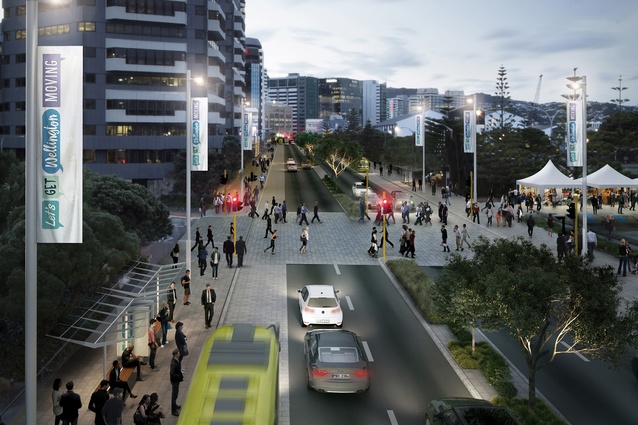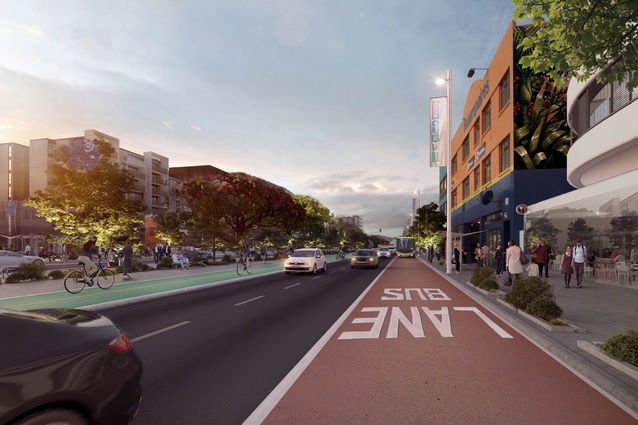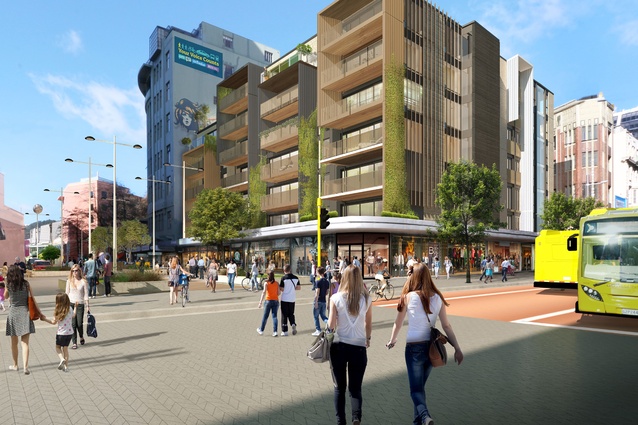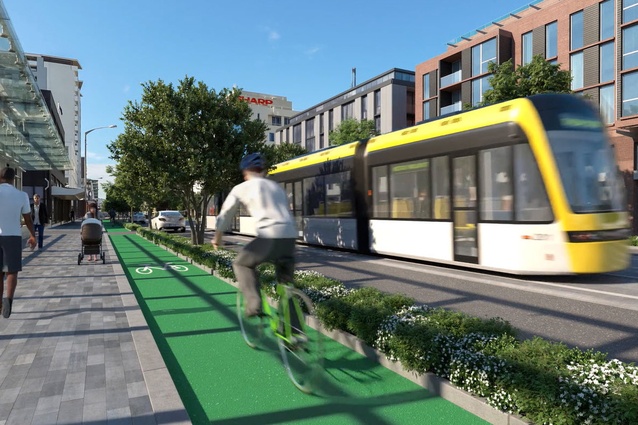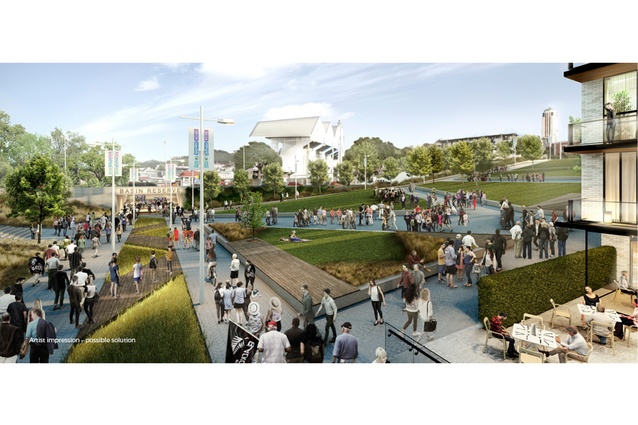How do we get Wellington moving?
Landscape Architecture Aotearoa discusses the government's plan for Wellington's public transport and whether it addresses the city's issues.
For the last few decades, Wellington transport investment hasn’t played to its advantages. Despite a compact mostly flat CBD, regional rail to one end, the town belt, the harbour and initiatives purporting to “fix traffic” with expanding road space have seen the capital city on the way to being a car-jammed, poorly-walkable, barely-bikeable mini-Auckland.
Government’s waded in, co-funding Let’s Get Wellington Moving, a $6.4 billion package to sort out transport in Wellington city. Various politicians have proclaimed it “transformational”.
But, beyond the gorgeous visualisations and the comms documents, what’s actually on the cards? And how will it deal with the crucial, vexed issue of the Basin Reserve, whose failed flyover kicked off this new “tripartite” collaboration? Here, Mt Victoria Residents’ Association and Tim Jones of Save The Basin give their take:
In 2015, following the final defeat of the New Zealand Transport Agency’s planned Basin Reserve motorway flyover, a new project was set up to plan transport between Ngauranga, where State Highway 1 comes down to join the railway line beside Wellington Harbour on its way into the city, and Wellington Airport.
After much internal politicking and a very significant change in government transport priorities, that project, Let’s Get Wellington Moving (LGWM), announced in May 2019 that the government had committed to fund up to $6.4 billion of work for an ‘indicative package’ to improve Wellington transport system. This package includes provision for better walking and cycling, better public transport and a mass transit system that can move large numbers of people through the city to key destinations. When announced, it also included a public pledge that there won’t be a flyover at the Basin Reserve.
LGWM says that, at its heart, the programme seeks to deliver a multi-modal transport system that moves more people, goods and services reliably with fewer vehicles. Mass transit will be a core element of the programme. There will be a 60:40 split between government and local government funding for the programme. Wellington City Council and Greater Wellington regional council now need to approve and confirm their part of the funding. This is the critical next step and it needs to happen before the elections in September.
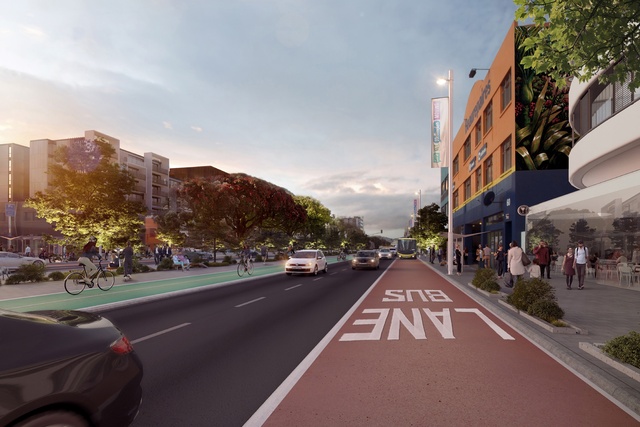
A lot has changed since 2015. Concerns about climate change have escalated to the point that many cities around New Zealand, including Christchurch, Auckland and now Wellington, have declared climate emergencies.
Urban mobility is undergoing rapid changes, with the rapid uptake of e-bikes over the past two years, and now the advent of e-scooters, meaning that conventional transport thinking – streets dominated by cars and trucks, with other users relegated to a narrow, bumpy footpath or a painted-on bike lane – has become rapidly updated. Let’s Get Wellington Moving has gone some way towards meeting those challenges, but not yet far enough.
Let’s start with the good stuff. Removing 1500 car parks from the city will help streets to return to their prime purpose of moving people. Integrated ticketing for public transport and lower speed limits in the CBD will also help improve the transport picture.
We need to ensure that people and vehicles that need to use the roads – emergency vehicles, for example – can do so smoothly, while other trips are made by other means.
Mass transit is a key part of the package. What form that will take is not yet decided. Light rail, trackless trams (“bendy buses”) and bus rapid transit are the options under consideration. These are supposed to be the subject of objective evaluation, but there is already a political hand on the scales, with Wellington’s Mayor, Justin Lester, pushing hard for trackless trams on the grounds, citing that their upfront capital cost is lower, that they can be implemented more quickly than light rail and that they are not confined to one fixed route.
Not everyone shares the mayor’s enthusiasm for trackless trams. Light rail advocates point out that trackless tram technology is unproven, that the very lack of a fixed route puts urban development priorities at risk, and that light rail’s running costs and safety record are both better than those of trackless trams.
But whichever technology is chosen, electric mass transit, if well implemented and well governed, would still be a huge improvement on what Wellington has at present: a fleet of highly-polluting diesel buses which struggle to meet existing demand for public transport, let alone projected future demand and frequently form a deafening wall down the Golden Mile.
Mass transit can be a game-changer for Wellington, but it needs to be part of an integrated system that includes better electric public transport, plus walking, cycling, and other forms of micro-mobility that make it easier for people to take short journeys, and link up with the mass transit route, without using cars.
LGWM’s headline announcements were more impressive than the details that were released at the same time. Reducing greenhouse gas emissions from transport is not given enough priority. Targets for reducing traffic (20 per cent by 2036) are too low. Lurking in the undergrowth of the documents released by Let’s Get Wellington Moving are projects that represent old-school, car-dominated transport thinking, such as the possibility of a second or expanded Terrace Tunnel that, if it went ahead, would flood the inner city with more cars.
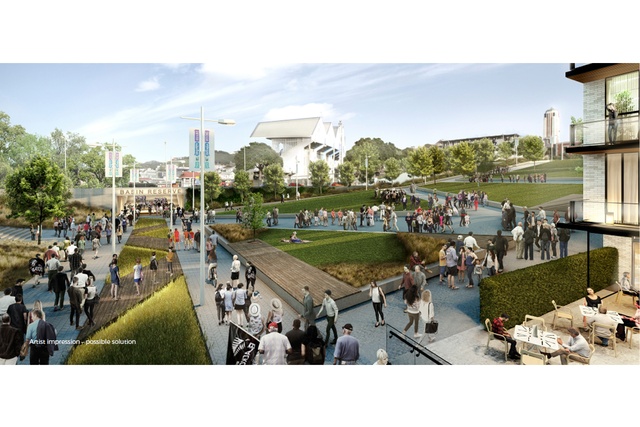
In transport and urban design, the devil is in the detail – and the details haven’t been made public yet. At the Basin Reserve, for example, there is still talk of grade separation to separate east-west and north-south traffic. The question on everyone’s lips: what will that consist of?
After yet more months of LGWM dragging its feet on releasing key documents, further eroding public trust in the decision-making process, a significant array of documents has been released. Amongst them are the “preferred option” for the Basin Reserve.
The preferred approach looks relatively good, but some big questions persist. For one, the diagrams were developed in the assumption that Karo Drive undergrounding would be included in the funded package – but it wasn’t. What (if anything) does this mean for the Basin concepts?
Citywide, funding of the LGWM package is the real test of Wellington councillors’ commitment to progressive transport. Although the full indicative package costs $6.4 billion, not all of that is funded yet, and a key political struggle is shaping up over which aspects of the package get money first and in what order they get built. LGWM’s various delays have meant these decisions are now being made in a local body election year, never a good climate for future-focussed thinking.
It’s crucial to make walking, cycling and public transport improvements and build mass transit first, and then give them a good opportunity to be adopted by the public before considering building any additional capacity for private motor vehicles. Encouragingly, the “do first” lists include bus priority, better walkability and cycling – things which should have been done years ago. But, business cases need to be presented for the “big ticket” items like mass transit, special organisations need to be created, and some kind of further consultation done. It will be a few years “before shovels hit the ground” as the Transport Minister quaintly put it.
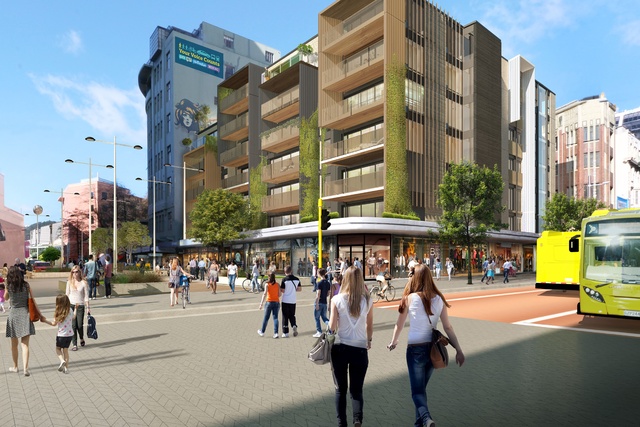
For now, there are many people speculating about what kind of mass transit type (or types) should be used, and how to reconfigure Wellington’s street network so it moves people and goods much better. Urban bloggers are making concept maps, pre-election posturing is gaining volume, and study tours are being proposed for councillors to look at mass transit options.
One central controversy in the route debates is a possible second tunnel through Mt Victoria near the Basin Reserve: should such a tunnel be built, and if so, should it be solely for some combination of walking, cycling, and public transport, or would it include general traffic – a blatant sop to those who still believe Wellington’s streets should have more cars? Councillors’ and would-be councillors’ statements about tunnels will reveal their progressive or retrograde colours and are worth reading closely.
What happens through this project, and what route and technology are chosen for mass transit in Wellington, are likely to be key debates for Wellington in the months ahead – all overshadowed by the larger questions of what New Zealand cities should be doing to prepare for the transport transformations wrought by climate change and by the breakdown of the car-centred model of how people get around cities.
A version of this article was first published on the Landscape Architecture Aotearoa website, which is published by the New Zealand Institute of Landscape Architects (NZILA).

